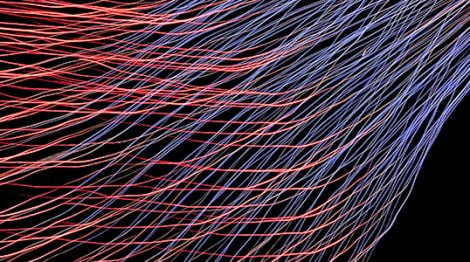Glossary of LoRaWAN technology
A small glossary that briefly summarizes the necessary concepts related to LoRaWAN to feel confident with this M2M technology.

Deciphering the Words and Acronyms
It is evident that LoRaWAN is a novel technology that allows the deployment of IoT initiatives like never before. However, precisely because it is recent, LoRaWAN is in a phase where only technicians very skilled in telecommunications feel comfortable with the nomenclature used in most available documentation.
Thus, this document aims to be a small glossary that briefly summarizes the necessary concepts to feel confident with this technology.
- LPWAN: acronym for Low Power Wide Area Networks, low-power wireless transmission technologies for large areas. The three major LPWANs currently are LoRaWAN, Sigfox, and NB-IoT.
- LoRa: physical layer of communication. Defines the frequencies and modulation for transmitting with this standard.
- LoRaWAN: application layer that describes the control, architecture, and protocol that runs on a LoRa modulation.
- Node: device that is the origin or final destination of a message in a LoRaWAN network; typically, nodes are sensors, instrumentation, or actuators.
- Gateway: device with the function of creating network coverage and registering nodes to work on it. In a small network, it also has the function of translating the Payload of LoRaWAN messages to a systems protocol (typically MQTT).
- Network Server: LoRaWAN network manager; in architectures with multiple Gateways, it is an independent element of the network. Its functions include coordinating the Gateways, eliminating duplicate messages, mobility and location of the nodes, managing security with the network and applications, translating messages to a format understandable by other systems, and enabling or disabling devices jointly, among other functions.
- Uplink: indicates the direction of a message; specifically, an Uplink message implies that the node is sending a message to the Gateway.
- Downlink: indicates the direction of a message; specifically, an Uplink message implies that the Gateway is sending a message to the node.
- Payload: properly the message that is to be transmitted without considering the rest of the frame that incorporates the LoRaWAN protocol. It is the useful data required by the final application of the system (SCADA, BMS, GMAO, etc.).
- Channel: within the 868 MHz band, different frequency ranges are subdivided where different nodes can transmit simultaneously. Each of them is a channel.
- Data Rate: amount of data transmitted per second. It depends mainly on the bandwidth and the SF.

- SF: acronym for Spreading Factor. Amount of bits used to transmit a single symbol. Equivalent to the boundrate in serial communications; the lower the SF, the greater the immunity to interference, but the lower the Data Rate.
- ToA: acronym for Time on Air. Time that elapses from when a signal is sent by a device until it reaches the receiver. The higher the ToA, the greater the saturation of the frequency band and the greater the energy consumption.
- ADR: acronym for Adaptive Data Rate. Mechanism used in LoRaWAN to dynamically change the SF in order to optimize the energy consumed when transmitting, but guaranteeing good immunity to noise.
- Duty Cycle: proportion of time (ratio or percentage) in which a component, device, or antenna is operating. In LoRaWAN, it is applied as the time in which a device is occupying a specific channel.
- ABP: acronym for Activation by Personalization. Manual access configuration to a LoRaWAN network where it is required to enter the following parameters in the Gateway: DevAddr, NwkSKey, and AppSKey.
- DevAddr: address of the node within the network
- NwkSKey: acronym for Network Session Key. Key necessary for the encryption of messages between the node and the Gateway.
- AppSKey: acronym for Application Session Key. Key necessary for encryption between the node and the application. In summary, it is the one that allows the Network Server (or the Gateway when it assumes part of its functions) to interpret and translate the Payload of the message.
- OTAA: acronym for Over-the-Air activation. Dynamic access configuration to a LoRaWAN network, where it is necessary to enter the parameters DevEui, AppEui, AppKey in the Gateway.
- DevEui: unique identifier that comes from the factory
- AppEui: unique application identifier. It serves to separate or classify the nodes according to the application that will interact with them.
- AppKey: secret AES 128 key shared by the node and the network.
We hope this article has been of interest to you and serves to better understand LoRaWAN technology. If you want to know more about it or how to set up your own network in your installation, do not hesitate to contact us.






